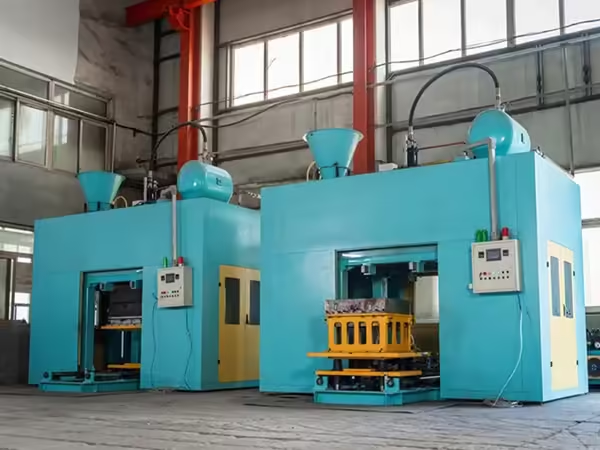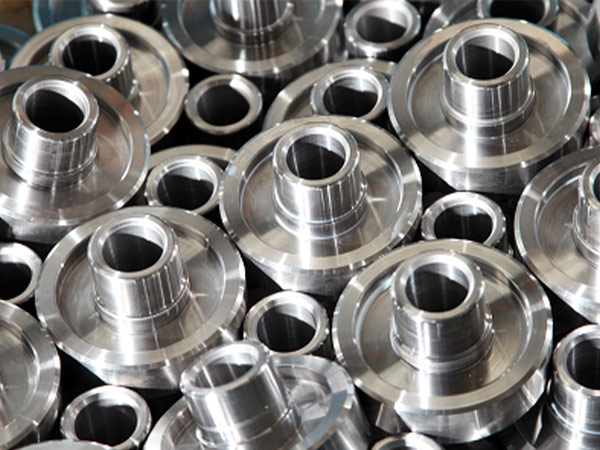Teile einer Handwasserpumpe aus Gusseisen: 4 Fehlerzeichen
Willkommen auf meinem Blog!
Ich freue mich sehr, dass du hier bist! Bevor wir uns in die Inhalte vertiefen, würde ich mich freuen, wenn du mir auf meinen Social-Media-Plattformen folgst. Dort teile ich zusätzliche Einblicke, vernetze mich mit unserer großartigen Community und halte dich über die neuesten Nachrichten auf dem Laufenden. So bleibst du in Verbindung:
📘 Facebook: Shanghai Leierwo Industriehandel Co., Ltd.
Lassen Sie uns gemeinsam auf diese Reise gehen! Ich hoffe, Sie finden die Inhalte hier nicht nur aufschlussreich, sondern auch inspirierend und wertvoll. Los geht‘s!
Inhaltsverzeichnis
Einführung

Handwasserpumpen aus Gusseisen sind eine langlebige und zuverlässige Lösung für die Wasserversorgung in ländlichen Häusern, auf Bauernhöfen, in Gärten und für Notstromsysteme. Ihre robuste Bauweise und die manuell bedienbaren Mechanismen machen sie ideal für netzunabhängige oder wartungsarme Anwendungen. Wie bei allen mechanischen Geräten unterliegen jedoch auch die inneren und äußeren Komponenten dieser Pumpen mit der Zeit Verschleiß und Abnutzung.
Die kritischen Komponenten – wie Pumpengriff, Kolbenstange, Rückschlagventil, Auslauf und Flansch – müssen in gutem Zustand bleiben, um eine ordnungsgemäße Funktion zu gewährleisten. Wenn eines dieser Teile beschädigt ist, kann es zu einem Ausfall Ihrer Handpumpe kommen. Dies kann zu Unannehmlichkeiten, Problemen mit dem Wasserzugang oder, schlimmer noch, zu dauerhaften Schäden am gesamten System führen.
In diesem Blog untersuchen wir vier wichtige Warnsignale, die darauf hinweisen, dass Ihr Teile für Handwasserpumpen aus Gusseisen möglicherweise ausfällt. Das frühzeitige Erkennen dieser Symptome kann Ihnen Zeit, Geld und den Ärger ersparen, der mit einem vollständigen Systemausfall verbunden ist.
Zeichen 1: Ungewöhnliche Geräusche oder Widerstand beim Pumpen
Einer der ersten und auffälligsten Indikatoren dafür, dass Ihr Teile für Handwasserpumpen aus Gusseisen Ein möglicher Defekt ist das Auftreten ungewöhnlicher Geräusche oder erhöhter Widerstand während des Betriebs. Idealerweise sollte sich der Pumpengriff reibungslos und mit minimalem Kraftaufwand bewegen lassen. Unregelmäßigkeiten in der Bewegung oder Geräusche können auf inneren Verschleiß oder Schäden an den Teilen der Handwasserpumpe aus Gusseisen hinweisen.
Wenn Sie Schleif-, Quietsch- oder Klickgeräusche hören, kann dies auf Folgendes hinweisen:
- Rost an Innenflächen durch Feuchtigkeitseinwirkung
- Abgenutzte Kolbenstangen, Lager oder Hülsen verursachen Reibung
- Lose Griffschrauben, Gestänge oder falsch ausgerichtete Drehpunkte
Diese mechanischen Symptome deuten darauf hin, dass die Teile Ihrer gusseisernen Handwasserpumpe entweder nicht richtig geschmiert sind oder langfristig verschleißen. Um die Ursache des Problems zu ermitteln, sind in der Regel eine Demontage und Inspektion erforderlich. Die Überprüfung aller inneren Kontaktflächen, beweglichen Komponenten und Griffverbindungen kann helfen, Defekte oder Fehlausrichtungen zu lokalisieren.
Durch frühzeitiges Beheben dieser Anzeichen vermeiden Sie nicht nur kostspielige Reparaturen, sondern auch einen vollständigen Systemausfall. Regelmäßige Inspektionen und der rechtzeitige Austausch beschädigter Teile der Handwasserpumpe aus Gusseisen gewährleisten dauerhafte Leistung und Sicherheit.
Zeichen 2: Reduzierte Wasserabgabe oder schwache Saugkraft

Ein weiteres wichtiges Zeichen für ein Versagen in Teile für Handwasserpumpen aus Gusseisen ist ein spürbarer Rückgang der Wasserleistung oder Saugkraft. Eine voll funktionsfähige Pumpe sollte einen gleichmäßigen und konstanten Wasserstrahl erzeugen. Wenn dieser Fluss schwächer wird oder unterbrochen wird, können die inneren Teile beschädigt sein.
Zu den häufigsten Ursachen gehören:
- Ein beschädigtes Rückschlagventil kann den Vakuumdruck nicht aufrechterhalten
- Ein verschlissener oder korrodierter Kolben oder Zylinder stört den Kompressionsprozess
- Luftlecks durch gerissene Armaturen oder beschädigte Rohrverbindungen
Es ist wichtig, zwischen Problemen mit der Wasserquelle und mechanischen Fehlern zu unterscheiden. Durch einen kontrollierten Drucktest oder eine Systemprüfung können Sie feststellen, ob die Teile der gusseisernen Handwasserpumpe die Ursache sind.
Durch rechtzeitige Reparatur oder Austausch verschlissener Komponenten, insbesondere Ventile und Dichtungen, kann die Leistung schnell wiederhergestellt werden. Darüber hinaus verbessert die Verwendung hochwertiger Ersatzteile aus Gusseisen die Zuverlässigkeit und Langlebigkeit Ihrer Handwasserpumpe.
Zeichen 3: Sichtbarer Rost, Korrosion oder Abblättern auf Oberflächen
Rost und Korrosion sind große Probleme bei der langfristigen Nutzung von Teile für Handwasserpumpen aus GusseisenGusseisen ist zwar für seine Festigkeit bekannt, doch Feuchtigkeit und Sauerstoff können die Metalloberfläche allmählich beschädigen. Rost schwächt nicht nur die Struktur, sondern erzeugt auch Reibung und blockiert den Wasserfluss.
Visuelle Anzeichen, auf die Sie achten sollten:
- Rotbraune Flecken am Pumpenkörper oder Griff
- Lochfraß an der Oberfläche, abblätternde oder blasige Farbe
- Kleine Risse in der Nähe von Schraubenlöchern, Fugen oder im Ausgussbereich
Dies kann darauf hinweisen, dass die Teile Ihrer gusseisernen Handwasserpumpe über die Oberfläche hinaus beschädigt sind. Ohne Eingriff kann sich die Korrosion im Inneren ausbreiten und Kolben, Ventile und Dichtungsflächen beeinträchtigen.
Um weitere Schäden zu vermeiden, tragen Sie regelmäßig Rostschutzbeschichtungen auf und reinigen Sie freiliegendes Metall. In schweren Fällen kann ein Austausch der betroffenen Teile der Handwasserpumpe aus Gusseisen erforderlich sein, um die strukturelle Integrität wiederherzustellen.
Ein ordnungsgemäßer Rostschutz und eine Teileprüfung sollten Teil Ihrer routinemäßigen Wartung sein, insbesondere wenn die Pumpe im Freien oder in feuchten Umgebungen installiert ist.
Zeichen 4: Lecks oder Wassertropfen rund um das Pumpengehäuse

Leckagen sind ein deutliches Anzeichen dafür, dass die Dichtung zwischen Teile für Handwasserpumpen aus Gusseisen ist nicht mehr intakt. Diese Lecks können folgende Ursachen haben:
- Dichtungsfehler zwischen Pumpenkopf und Basis
- Gebrochene Flansche oder Gehäusekomponenten
- Abgenutzte Dichtungen oder O-Ringe an der Kolbenstange
Undichte Pumpen verursachen nicht nur Verschwendung, sondern können auch die Umgebung überfluten und so rutschige Oberflächen oder Bodenerosion verursachen. Darüber hinaus führt eine ständige Leckage zu einer deutlich schnelleren Korrosion der inneren und äußeren Teile.
Überprüfen Sie regelmäßig, ob sich Feuchtigkeit an den Fugen oder am Boden ansammelt. Schon ein langsames Tropfen kann darauf hinweisen, dass es Zeit für eine Wartung oder den Austausch von Teilen ist.
Vergleichstabelle häufiger Probleme und Lösungen
| Warnschild | Mögliche Ursache | Empfohlene Aktion |
|---|---|---|
| Ungewöhnliche Geräusche während des Betriebs | Abgenutzte Lager oder verrostete Teile | Abgenutzte Teile schmieren oder ersetzen |
| Schwache Saugleistung oder geringe Wasserleistung | Undichte Ventile oder beschädigter Kolben | Dichtungen prüfen, beschädigte Innenteile ersetzen |
| Oberflächenkorrosion | Feuchtigkeitseinwirkung, minderwertige Beschichtung | Korrodierte Abschnitte neu beschichten oder ersetzen |
| Anhaltende Wasserlecks | Dichtungs- oder Versiegelungsfehler | Anschlüsse neu abdichten oder neue Dichtungen einbauen |
Abschluss
Frühe Verschleißerscheinungen erkennen in Teile für Handwasserpumpen aus Gusseisen kann kostspielige Ausfälle verhindern und die Lebensdauer des Systems verlängern. Denken Sie daran:
- Überprüfen Sie bewegliche Teile monatlich auf Rost, Ausrichtung und Geräusche
- Überwachen Sie die Saugstärke, um Druckverlust zu erkennen
- Auf Lecks und Wassertropfen prüfen
- Reagieren Sie umgehend, wenn Teile sichtbaren Verschleiß aufweisen
Unabhängig davon, ob Ihre Pumpe täglich oder saisonal genutzt wird, zahlt sich eine proaktive Wartung immer aus. Der Austausch einer einzelnen Dichtung oder Kolbenstange ist deutlich günstiger als der Austausch der gesamten Pumpe oder ein unerwarteter Verlust des Wasserzugangs.
Wenn Sie diese vier häufigen Warnsignale verstehen und wissen, worauf Sie achten müssen, stellen Sie sicher, dass Ihre Handpumpe auch in den kommenden Jahren zuverlässig funktioniert.
Häufig gestellte Fragen
Welche Teile fallen bei einer Handwasserpumpe aus Gusseisen am häufigsten aus?
Die am häufigsten defekten Komponenten einer herkömmlichen Handwasserpumpe aus Gusseisen sind die Kolbenstange, das Rückschlagventil und verschiedene Dichtungen. Diese Teile sind während jedes Pumpzyklus ständiger mechanischer Belastung, Wassereinwirkung und Druckschwankungen ausgesetzt. Mit der Zeit ist Verschleiß unvermeidlich, insbesondere wenn regelmäßige Schmierung und Wartung vernachlässigt werden.
Denn diese spezifischen Teile für Handwasserpumpen aus Gusseisen Da sie wiederholten Bewegungen und häufigem Abdichten und Öffnen ausgesetzt sind, neigen sie dazu, schneller zu verschleißen als statischere Komponenten. Ein rechtzeitiger Austausch bei ersten Anzeichen eines Ausfalls – wie etwa nachlassendem Wasserdruck oder unregelmäßigem Pumpwiderstand – trägt dazu bei, die Gesamtlebensdauer der Pumpe zu verlängern.
Wie oft sollte ich Wartungsarbeiten durchführen?
Regelmäßige Wartung ist der Schlüssel zur Erhaltung der Effizienz und Langlebigkeit aller Teile für Handwasserpumpen aus GusseisenAls Faustregel gilt, mindestens einmal im Monat eine grundlegende Sichtprüfung durchzuführen und auf sichtbaren Rost, Lecks oder mechanischen Widerstand zu prüfen. Bei Pumpen, die häufig oder stark beansprucht werden, sollte alle 6 bis 12 Monate eine umfassende Innenprüfung durchgeführt werden.
Untersuchen Sie bei diesen gründlichen Prüfungen alle wichtigen Teile der Handwasserpumpe aus Gusseisen – wie Kolbenbaugruppe, Zylinderinnenwand, Ventile und Gestängeverbindungen. Entfernen Sie alle Mineralablagerungen, schmieren Sie bewegliche Gelenke neu und achten Sie auf Anzeichen von Ermüdung, Korrosion oder Fehlausrichtung.
Indem Sie Verschleiß frühzeitig erkennen, bevor er zu einem Ausfall führt, schützen Sie nicht nur Ihre Investition, sondern gewährleisten auch einen zuverlässigen Zugang zu Wasser, wenn Sie es am dringendsten benötigen.
Kann ich Ersatzteile anderer Marken verwenden?
Kompatibilität ist ein wichtiges Kriterium bei der Beschaffung von Ersatzteilen für Handwasserpumpen aus Gusseisen, insbesondere wenn Ihr ursprüngliches Pumpenmodell älter oder selten ist. Einige Komponenten – wie einfache Schrauben oder Dichtungen – sind möglicherweise standardisiert und austauschbar. Viele Teile wie Gewindeventile, Kolben und Gehäusebeschläge werden jedoch mit spezifischen Toleranzen gefertigt, die für jeden Hersteller einzigartig sind.
Vor dem Kauf von Aftermarket- oder Drittanbieter- Teile für Handwasserpumpen aus GusseisenLesen Sie immer die Original-Bedienungsanleitung oder die Dokumentation des Herstellers. Der Einbau nicht passender Komponenten kann zu unzureichender Abdichtung, mechanischer Instabilität oder sogar zu dauerhaften Schäden an Ihrer Pumpe führen.
Wenn Originalteile nicht mehr verfügbar sind, arbeiten Sie mit einem vertrauenswürdigen Lieferanten oder Reparaturtechniker zusammen, um die Kompatibilität zu überprüfen oder präzisionsgefertigte Alternativen zu beschaffen.
Ist es besser, eine stark verrostete Pumpe zu reparieren oder auszutauschen?
Das hängt vom Ausmaß der Korrosion und dem Zustand der Kernkomponenten ab. Wenn der Rost auf Ihrem Teile für Handwasserpumpen aus Gusseisen Beschränkt sich das Problem auf oberflächliche Verfärbungen oder leichte Ablagerungen, kann es häufig mit einer Drahtbürste entfernt und anschließend mit einer rostbeständigen Farbe neu beschichtet werden.
Tiefe Rostlöcher, abblätterndes Metall oder Risse an Belastungspunkten – beispielsweise in der Nähe von Schrauben, Zylinderdichtungen oder Griffverbindungen – können jedoch auf eine strukturelle Schwächung hinweisen. In solchen Fällen ist der Austausch der betroffenen Teile der Handwasserpumpe aus Gusseisen oder sogar der gesamten Pumpe oft kostengünstiger und langfristig sicherer.
Im Zweifelsfall sollte die Pumpe zerlegt und die kritischen Bereiche im Inneren überprüft werden. Strukturelle Schäden an drucktragenden Komponenten sollten nicht ignoriert werden, insbesondere wenn die Pumpe für wichtige Aufgaben der Wasserversorgung eingesetzt wird.
Welche Art von Beschichtung schützt Gusseisen am besten?
Zum Schutz Teile für Handwasserpumpen aus Gusseisen Um Korrosion, insbesondere im Außenbereich oder in feuchten Umgebungen, langfristig zu verhindern, ist die richtige Schutzbeschichtung unerlässlich. Zu den besten Optionen zählen rostbeständige Lacke auf Epoxidbasis, die eine hervorragende Haftung und lange Haltbarkeit bieten. Alternativ bietet Pulverbeschichtung eine harte, verschleißfeste Oberfläche und wird häufig für industrielle Anwendungen bevorzugt.
Reinigen Sie vor dem Beschichten alle Oberflächen gründlich, um vorhandenen Rost und Feuchtigkeit zu entfernen. Für optimale Haftung auf rauen oder gealterten Oberflächen kann eine Grundierung erforderlich sein. Regelmäßiges Auftragen von Schutzschichten sorgt dafür, dass die Teile Ihrer gusseisernen Handwasserpumpe widerstandsfähig gegen Oxidation und Umwelteinflüsse bleiben. Dies reduziert den Wartungsaufwand und verlängert die Lebensdauer.
Produktkategorien
- Ventilteile
- Wasserpumpenteile
- Lagergehäuseteile
- Druckgussteile
- Pumpenprodukte aus Edelstahl
- Pumpenprodukte aus Gusseisen
- Ventilteile für den Automobilgebrauch
- Autoteile
- Ventilteile für den zivilen Gebrauch
- Vakuumpumpenteile KF

